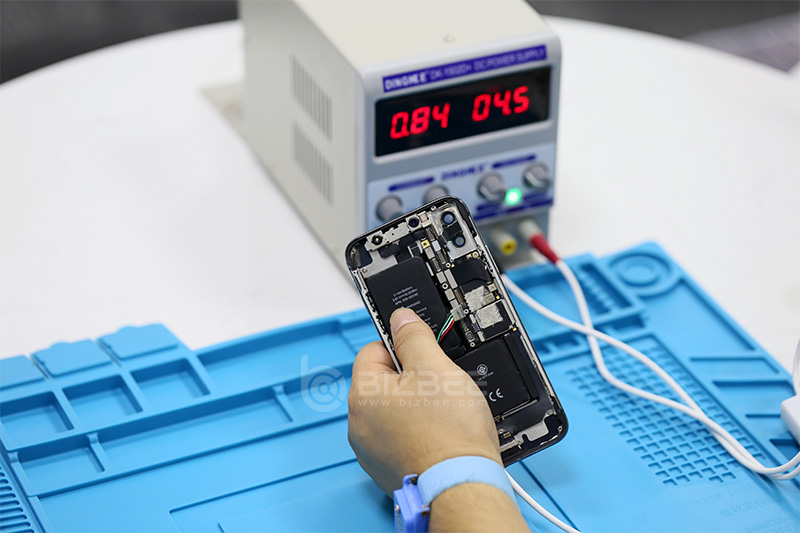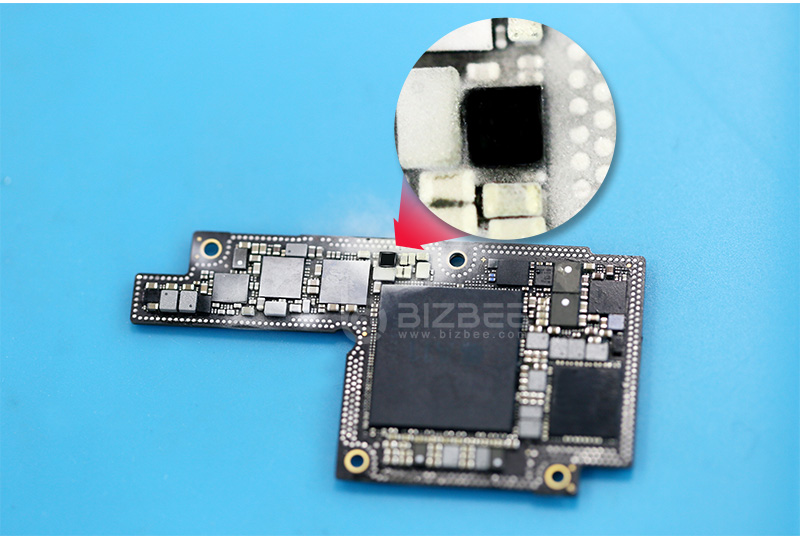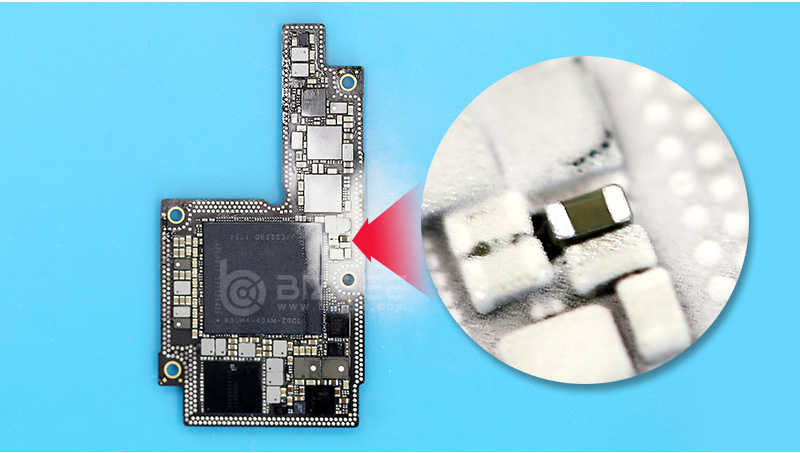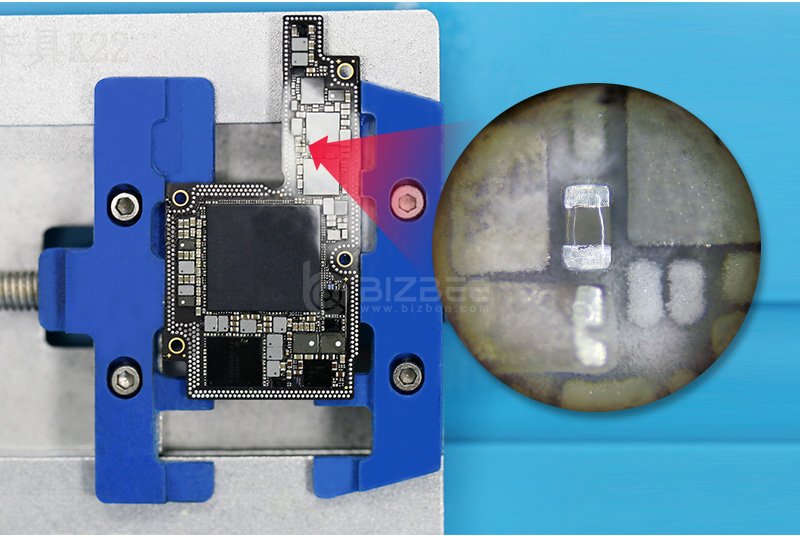

[Use tools and consumables]
Tools: ① Multimeter, ② Air gun soldering iron set, ③ Special tip tweezers, ④ Adjustable regulated power supply with iPhone power cord, ⑤ High temperature repair pad, ⑥ Microscope, ⑦ Mobile phone repair fixture, ⑧ Disassemble screwdriver set, ⑨ Brush, ⑩ iPhone X tinned steel mesh.
Consumables: ① Solid rosin or thermal imager, ② Low-temperature tin wire, ③ Washing water or thinner, ④ Clean cloth, ⑤High-temperature glue, ⑥ Welding flux ⑦ Tin paste.

[Model]: iPhone X
[Fault phenomenon]: No power on, no response to charging, no response to forced restart of the phone.
[Maintenance process]:
1. Receive an iPhone X that does not turn on, disassemble it and connect it to an adjustable regulated power supply with a high current of 840 mA. It is confirmed that it is a failure of high current to turn on, and the motherboard is obviously hot.

2. Continue to connect the adjustable regulated power supply, first lock the probably hot position, on the upper layer of the motherboard.

3. Directly layer the motherboard with a gun at 350 degrees. (Recommend Bizbee's motherboard separate heating platform)
4. Connect an adjustable regulated power supply to the upper motherboard. The current is still the same when it is powered on, which can be confirmed as an upper short circuit. Reduce the hot area again, smoke it with rosin (you can also use a thermal imager), connect the upper motherboard to an adjustable regulated power supply and power it on again. It is found that the rosin on the U3100 has melted, indicating that this chip has a short circuit failure. This chip is Bootstrap boost IC, according to iPhone7G repair experience, it should not be caused by the damage of this chip but by the short circuit of the filter capacitor on the PP_VDD_BOOST path (with circuit schematic and physical diagram).

5. Measure PP_VDD_BOOST and find that the resistance to ground is 0. We smoked rosin on the filter capacitor on the PP_VDD_BOOST path, and then separately applied 4V to PP_VDD_BOOST.

6. Look, let the initiator of the BOOST chip backlight appear. The rosin on C3112 melts, indicating that this capacitor is short-circuited. We remove it. After removing the C3112 capacitor, the circuit resistance to ground is still 0, but the current is smaller than before. There is also a short circuit in the circuit.


8. After the test is normal, find two capacitors of the same size and solder them back to the motherboard.

9. The fault is eliminated, the test function is normal, and the maintenance is over.

Attachment :
The English name of the Boost boost circuit is "the boost converter", or "step-upconverter", which is a switching DC boost circuit that can convert DC into another fixed voltage or adjustable voltage DC , Also known as DC-DC converter (DC/DCConverter). Our repair counterparts are generally called bootstrap circuits.
iPhone started to import this Boost boost IC from the seventh-generation iPhone7G. The input is the main power supply VDD_MAIN, and the output PP_VDD_BOOST is respectively supplied to the audio IC, FaceID driver IC, and power amplifier ICs for power supply. When the battery voltage is greater than 3.4V, the VDD BOOST chip outputs 3.4V. When the battery voltage is less than 3.4V, the VDD BOOST chip outputs 3.4V to increase the battery life.






